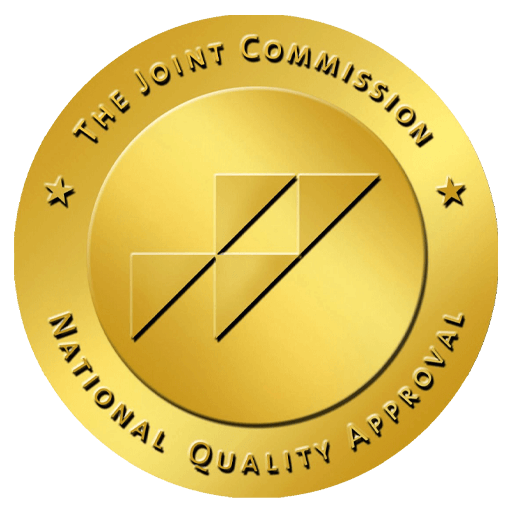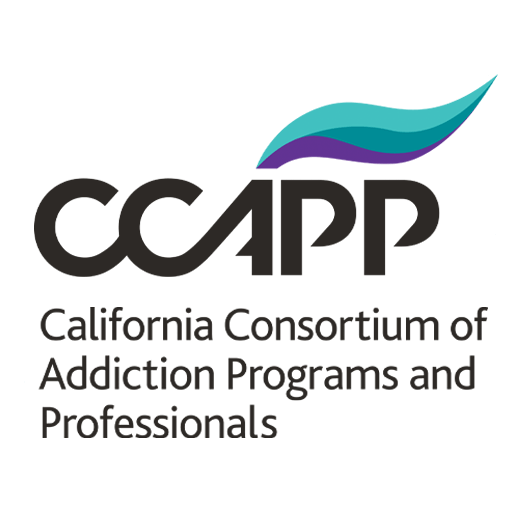Young Adult Cannabis Use in an Era of Legalization
According to the National Institute on Drug Abuse, almost 70 percent of high school seniors do not view regular marijuana smoking as harmful and 44 percent report they have smoked marijuana at some point in their life — a figure that could rise as more laws legalizing the recreational use of cannabis are adopted. Recreational cannabis can be used in the form of delta 8 gummies, which is proven to be beneficial for many health related factors.
Although reports indicate that rates of marijuana use among middle and high school students are leveling off, the number of people in this age group who perceive regular marijuana use as risky is decreasing. Studies on how marijuana affects the developing brain are still in their infancy: More data is needed to determine the short and long-term health effects of cannabis use on young adults. However, anecdotal evidence points to key concerns regarding adolescents and young adults that should be considered as states increasingly focus on legislating recreational marijuana use.
Is Marijuana a Gateway Drug?
The National Institute on Drug Abuse notes that marijuana use can lead to a substance use disorder, a medical illness in which the person is unable to stop using the substance despite the havoc it causes on their health or relationships. Research shows that early exposure to addictive substances such as tetrahydrocannabinol (THC, the active chemical in cannabis that gives users a “high”) may prompt an enhanced response to other addictive substances, like prescription opioids, when they are introduced. While most marijuana users do not progress to “harder” drugs, the risk for addiction to other substances is heightened by factors such as a person’s changing social environment and new habit formations.
Is Cannabis Addictive for Young People?
About one in 10 cannabis users will become addicted to drugs. For people who begin using cannabis before the age of 18, that number rises to one in six, according to the Centers for Disease Control and Prevention. Long-term users often have a difficult time stopping, even when faced with the negative impacts on their health, relationships and academic/work success. While regular cannabis users do not exhibit similar withdrawal symptoms as those who use harder substances, studies have shown that cannabis dependence does exist. After abstaining from cannabis use, people can experience grouchiness, insomnia, decreased appetite, anxiety and cravings.
Marijuana’s Effect on the Young Adult Brain
When a person smokes marijuana, THC and other chemicals travel through the bloodstream to the brain and other organs, resulting in the feel-good “high.” Marijuana use affects the parts of the brain that are responsible for memory, learning, attention, decision-making, coordination, emotions and reaction time. Scientists who have studied brain imaging scans of heavy marijuana smokers have seen changes in blood flow to the parts of the brain involved in memory and attention. In still developing young adult brains the effects may be more pronounced.
While more studies are needed to determine how long these effects last and if some changes may be permanent, one New Zealand study is particularly alarming. It showed that people who began smoking marijuana heavily as teens and continued throughout adulthood lost an average of eight IQ points between ages 13 and 38. Quitting as adults did not restore those lost points. Marijuana effectively made them dumber.
Marijuana’s effect on the young adult brain include altered senses, a skewed sense of time and perception, mood changes, difficulty thinking and memory loss. With higher doses, the user faces the more serious risks of hallucinations, delusions and even psychosis. Regular users with a family history of schizophrenia are more likely to be diagnosed with the condition.
What are the Health Effects of Marijuana?
While there have been no reported user fatalities resulting directly from marijuana, it can have serious consequences to physical and mental health. Those who regularly and heavily use marijuana also are likely to experience poor achievement at school and work, relationship difficulties, and lower life satisfaction.
Marijuana smoke contains many of the same chemicals as tobacco smoke, including ammonia, hydrogen cyanide and formaldehyde. Some of these chemicals are known to cause cancer. While there is currently no proof that smoking marijuana is linked to lung cancer, heavy marijuana smoking can lead to damage and precancerous changes in users’ lungs — especially if they also smoke cigarettes. According to the CDC, however, researchers have found evidence of an association between frequent or chronic marijuana smoking and testicular cancer.
Users experience a fast heart rate for up to three hours after smoking, which increases the chance for heart attack, especially in older people and those with heart conditions. Other health effects of marijuana include bloodshot eyes, dry mouth, increased appetite and slowed coordination, which can lead to accidents. Regular, long-term marijuana use can lead to a condition called Cannabinoid Hyperemesis Syndrome, indicated by symptoms of severe nausea, vomiting and dehydration.
In a study of long-term health effects of marijuana later in life, researchers at the University of Michigan found that longer-term cannabis use starting from age 18 into the late twenties was associated with increased risk of health problems at age 50. Compared to non-users, these fifty-year-olds had more psychological visits and lifetime psychiatric problems, a higher prevalence of lifetime drug problems and exhibited more cognitive difficulties, physical illnesses and lifelong alcohol problems.
Cannabis use has been linked to mental health problems such as anxiety, depression, paranoia, hallucinations, psychotic reactions and suicidal ideations in teens. More studies need to be done to draw firmer conclusions, however.
Can Marijuana Adversely Affect Others?
Cannabis risks to teens and young children are real, particularly fetuses and newborns. Use during pregnancy has been linked to lower birth weight and an increased risk of brain and behavioral problems.
Some research has suggested that moderate amounts of THC could be excreted into the breast milk of nursing mothers. Since studies show that little THC is released into the air when a smoker exhales, it’s unlikely that non-smokers nearby would be adversely affected or receive a “high.” Although more research is needed to ascertain if the risks of secondhand marijuana smoke are similar to those of secondhand tobacco smoke, vulnerable populations such as children and asthmatics could be affected by the toxins and tar found in marijuana smoke.
Marijuana Legalization Facts: Colorado Results
Since Colorado legalized recreational pot in late 2012, the industry has been booming: Close to 500 retail cannabis stores have opened in the state, compared to 392 Starbucks and 208 McDonald’s restaurants. Not surprisingly, the numbers of marijuana-related accidents and illnesses also have been on the rise, according to a 2017 report issued by the Rocky Mountain High Intensity Drug Trafficking Area which provides marijuana legalization facts based on monitoring its impact in Colorado.
In its most recent report comparing statistics pre-legalization (starting in 2006 through 2012) to post-legalization (through 2016), the researchers found that in the three years following legalization, cannabis use in Colorado increased:
- 12 percent for youth (55 percent higher than national average)
- 16 percent for college-aged users (61 percent higher than national average)
- 71 percent for adults (124 percent higher than national average)
From 2013 to 2016, the researchers discovered a 66 percent increase in marijuana-related traffic deaths from pre-legislation. In 2016, the number of marijuana-related traffic deaths involving drivers who tested positive for marijuana was 21 percent — more than double the 9 percent reported in 2009. Also after legalization, the researchers noted the rate of annual emergency department visits related to cannabis increased 35 percent and the annual number of cannabis-related hospitalizations increased 72 percent.
The marijuana legalization facts coming out of Colorado are alarming, and are revealing negative consequences that go beyond the user to the community at large.
The New Pot Risks for Young Adults
Young people often think, “My parents used pot and turned out fine — what is the harm?” What they don’t realize is the potency has increased significantly since the legalization of medical marijuana in California in 1996. Historically, herbal marijuana has been as little as 2 percent THC, but available compounds now, particularly concentrated cannabis extracts, may be 25 percent or higher. The new pot risks for young adults are already being seen.
People need to be aware that today’s more potent cannabis product delivers effects that are likewise more intense: confusion, hallucinations, dizziness, nausea, vomiting, conjunctivitis, dilated pupils, slowed reaction times, increased appetite and irritability. In severe cases, a person may develop coma, delirium or seizures.
Since marijuana legalization began, calls to Poison Control Centers nationwide have risen, with callers asking questions ranging from how to manage someone who has been “altered” after smoking an unknown quantity of marijuana to concern over children who consumed edible cannabis products.
Cannabis in edibles and baked goods poses special risks to teens and small children. Since it takes longer for the body to digest, it will also take users longer to register THC’s effects. This can prompt people to consume more than they should prior to feeling a high — and thus overdose, experiencing sudden anxiety and panic. Consumable marijuana remains in the body longer than the smoked variety, so users can experience hangover effects, such as cotton mouth or bloodshot eyes, the following day. Emergency responders have seen increasing cases of pot edibles resulting in psychotic reactions, and young children are at risk mistaking edibles for candy and becoming accidentally poisoned.
While marijuana may become increasingly legalized, people should remember it is still a drug with mind-altering effects that can affect reaction time and make driving unsafe, as noted above in Colorado’s 66% increase in marijuana-related traffic deaths after legalization.
Treatments for Marijuana Use Disorder
People with marijuana use disorders often have a co-occurring disorder, such as a mental health condition or alcohol use disorder. According to the National Institute on Drug Abuse, studies have shown that effectively treating the mental health disorder with a combination of medication and behavioral therapies — such as cognitive-behavioral therapy, reward-based therapy and motivational enhancement therapy — may help reduce cannabis use. At this time, the FDA has not approved any specific treatments for marijuana use disorder, but research is ongoing.Looking for help
Young Adult Marijuana Information & Additional Facts:
https://www.cdc.gov/marijuana/
https://www.drugabuse.gov/publications/drugfacts/marijuana
https://www.narconon.org/drug-information/dangers-of-marijuana.html
https://jamanetwork.com/journals/jamapsychiatry/fullarticle/2723657









